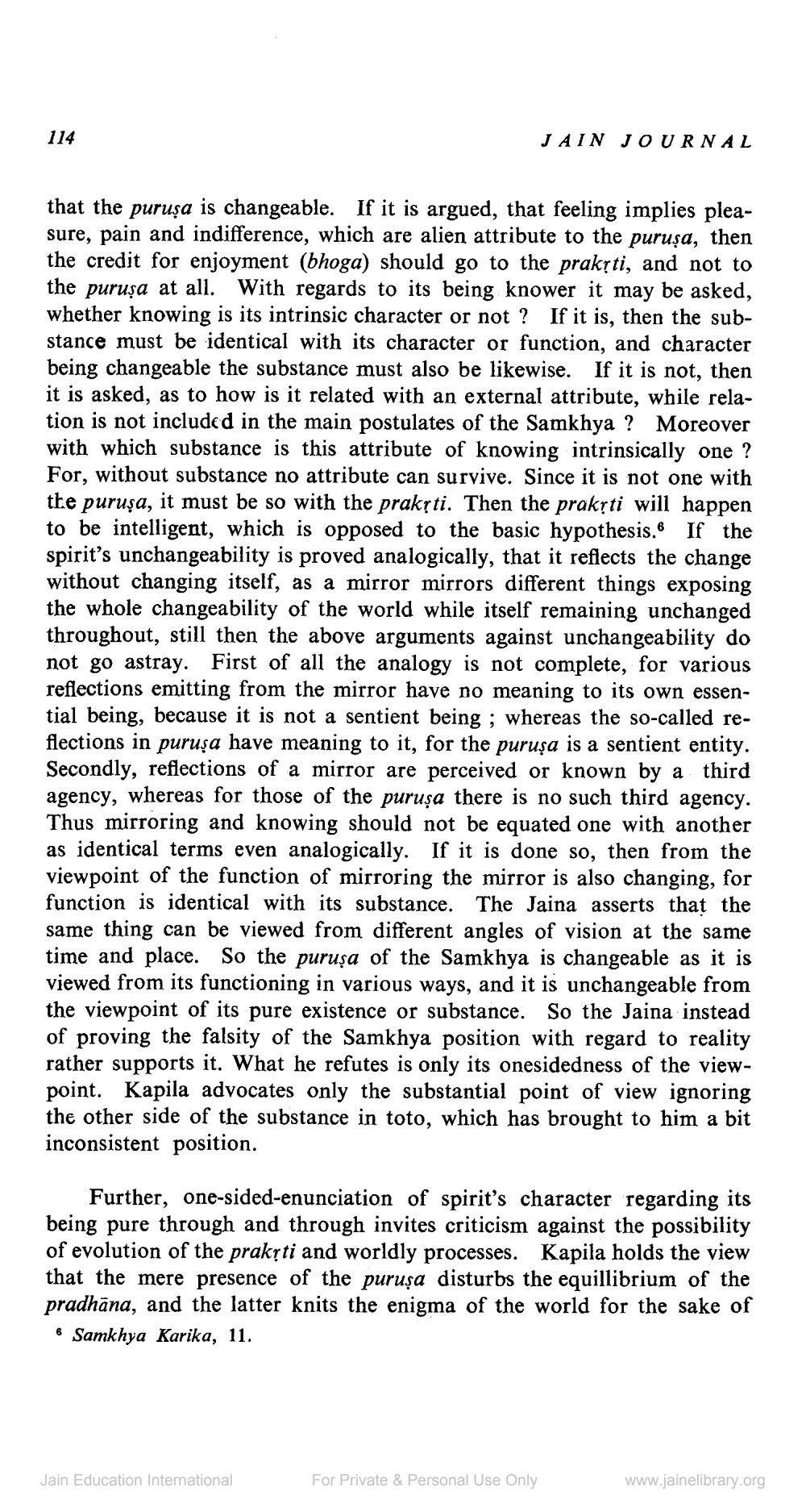________________
114
JAIN JOURNAL
that the puruşa is changeable. If it is argued, that feeling implies pleasure, pain and indifference, which are alien attribute to the puruşa, then the credit for enjoyment (bhoga) should go to the prakrti, and not to the purușa at all. With regards to its being knower it may be asked, whether knowing is its intrinsic character or not? If it is, then the substance must be identical with its character or function, and character being changeable the substance must also be likewise. If it is not, then it is asked, as to how is it related with an external attribute, while relation is not included in the main postulates of the Samkhya ? Moreover with which substance is this attribute of knowing intrinsically one ? For, without substance no attribute can survive. Since it is not one with the puruşa, it must be so with the praksti. Then the prakrti will happen to be intelligent, which is opposed to the basic hypothesis. If the spirit's unchangeability is proved analogically, that it reflects the change without changing itself, as a mirror mirrors different things exposing the whole changeability of the world while itself remaining unchanged throughout, still then the above arguments against unchangeability do not go astray. First of all the analogy is not complete, for various reflections emitting from the mirror have no meaning to its own essential being, because it is not a sentient being ; whereas the so-called reflections in puruşa have meaning to it, for the puruşa is a sentient entity. Secondly, reflections of a mirror are perceived or known by a third agency, whereas for those of the puruşa there is no such third agency. Thus mirroring and knowing should not be equated one with another as identical terms even analogically. If it is done so, then from the viewpoint of the function of mirroring the mirror is also changing, for function is identical with its substance. The Jaina asserts that the same thing can be viewed from different angles of vision at the same time and place. So the puruṣa of the Samkhya is changeable as it is viewed from its functioning in various ways, and it is unchangeable from the viewpoint of its pure existence or substance. So the Jaina instead of proving the falsity of the Samkhya position with regard to reality rather supports it. What he refutes is only its onesidedness of the viewpoint. Kapila advocates only the substantial point of view ignoring the other side of the substance in toto, which has brought to him a bit inconsistent position.
Further, one-sided-enunciation of spirit's character regarding its being pure through and through invites criticism against the possibility of evolution of the prakrti and worldly processes. Kapila holds the view that the mere presence of the puruşa disturbs the equillibrium of the pradhāna, and the latter knits the enigma of the world for the sake of 6 Samkhya Karika, 11.
Jain Education International
For Private & Personal Use Only
www.jainelibrary.org




